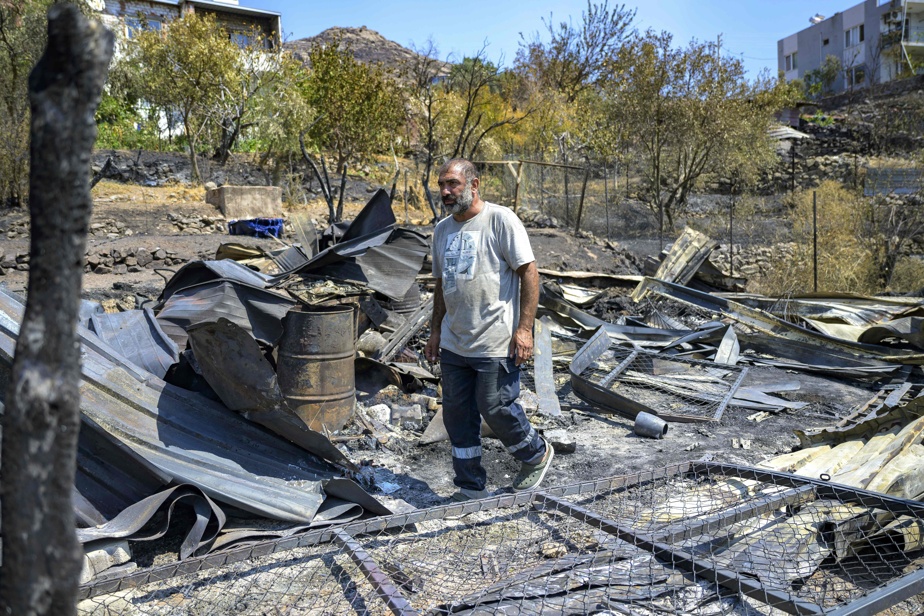(Sancaklı) The picturesque village of Sancakli, located on the heights of Izmir, offered a breathtaking panorama of the western coast of Turkey until the flames turned it into a landscape of desolation.
Wildfires have ravaged forests and steep valleys around Izmir, Turkey’s third most populous city, in recent days.
Abdullah Ozata looks on with despair at the extent of the damage in Sancakli, where residents were evacuated to save lives.
“Twelve of my sheep and 50 chickens died in the fire,” he told AFP, showing the charred remains of the animals.
“I lost all my livestock,” the 43-year-old laments as he walks over the rubble. “I have no other job, no other source of income.”

PHOTO YASIN AKGUL, AGENCE FRANCE-PRESSE
Abdullah Ozata looks on with despair at the extent of the damage in Sancakli, where residents were evacuated to save lives.
Two officials from the Ministry of Finance photograph the damage and record the losses for a compensation claim.
“The gendarmerie evacuated us to avoid human losses, but I lost my animals,” he regrets.
“Our village was beautiful, it was like a paradise, but it turned into hell.”
After spreading for four days due to strong winds, the fire has been largely brought under control, authorities said Sunday.
But it left vast areas of charred and blackened earth, destroying olive trees, vegetable gardens and beehives.

PHOTO YASIN AKGUL, AGENCE FRANCE-PRESSE
This aerial photograph shows a partially burned forest area following a wildfire in the village of Sancakli in Izmir province, western Turkey, on August 18, 2024.
At least 43 buildings were damaged in Izmir province, while 26 people were hospitalized.
“There is no risk in the section overlooking the city. Firefighters have trapped the fire in a valley. Thank God, the fire in Izmir is now under control,” Agriculture and Forestry Minister Ibrahim Yumakli announced on Sunday.
“Besieged by the flames”
Gokhan Cekmez defied orders to evacuate the village and returned to try to fight the flames.
“I played hide-and-seek with the police. But without me and the other villagers, the extent of the damage would have been much worse,” he says.
The reinforcements were not enough. We did our best to put out the fire with our pots.
Gokhan Cekmez, resident of Sancakli
In Sancakli, running water was restored on Sunday, while authorities were still repairing power cables damaged by the fire.
Agriculture and livestock breeding were the only source of income for the village’s 200 residents, says local administrator Ilhan Kaya.
“The villagers will have to survive with state aid for at least six months. We will wait until the burnt areas turn green again,” he said.
Wearing a flowery scarf on the terrace of her three-storey house, Gulhan Arasa is still haunted by the nightmare of the fire.
“I wish the authorities would have let me help, even though I’m a woman. I would have taken a hose and tried to put out the fire,” she says.

PHOTO YASIN AKGUL, AGENCE FRANCE-PRESSE
A resident observes the damage at the site of a burned barn in the village of Sancakli.
“We panicked when we were besieged by the flames that spread in seconds,” she recalls.
Mme Arasa and his family, who depend on livestock for their income, managed to keep their hundred or so sheep and goats safe during the fire.
“Thank God they are all alive. We didn’t let them out because we were surrounded by flames,” she said.
But apart from that, “everything turned to ashes.”
“We expect the state to cover our losses. We want new trees to be planted in place of the burnt ones,” she complains.
“If God wills, the soil will renew itself. But when? I don’t know.”
